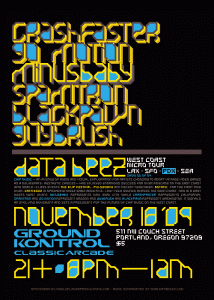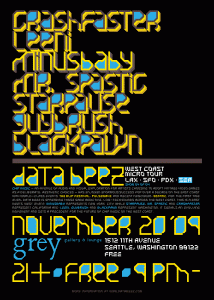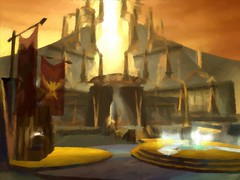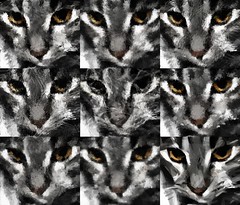last night i had a great time with kirill, guybrush, and matt at microsoft testing out and playing with live music visualization stuff. guybrush and i will be doing the visuals for the portland, oregon and seattle, washington stops of the data beez tour! it's been a really fun experience for me so far as i've been introduced to some great musicians (whose tunes are drilled quite deep into my brain now as they've been looping for so many days XD), have picked up the programming environment processing, and given lots of thought to whole new aspects of sync and synesthesia outside of what i've previously toyed with in doing demoscene productions.
departing from what i think is the normal vj style and inspired by guybrush, paris and other visual artists on the tour, i've focused on creating a sort of visual instrument controlled by a laptop keyboard and a korg midi controller. it has five independently controlled layers: feedback, background, midground, foreground, and post process. each layer maps to a row on the laptop keyboard for switching between effects and a block of controls on the korg for controlling speed/amount, beat/kick, and either audio reactivity or transparency. it makes for an incredibly fun toy but i have to avoid some combinations that produce immediate eye cancer! ;)
this weekend i'm hoping to finish the bulk of the code, effects and visual content and also get in practice time 'playing' it as a complement to music. hopefully things turn out well and the musicians and audiences next week enjoy the results. :)









